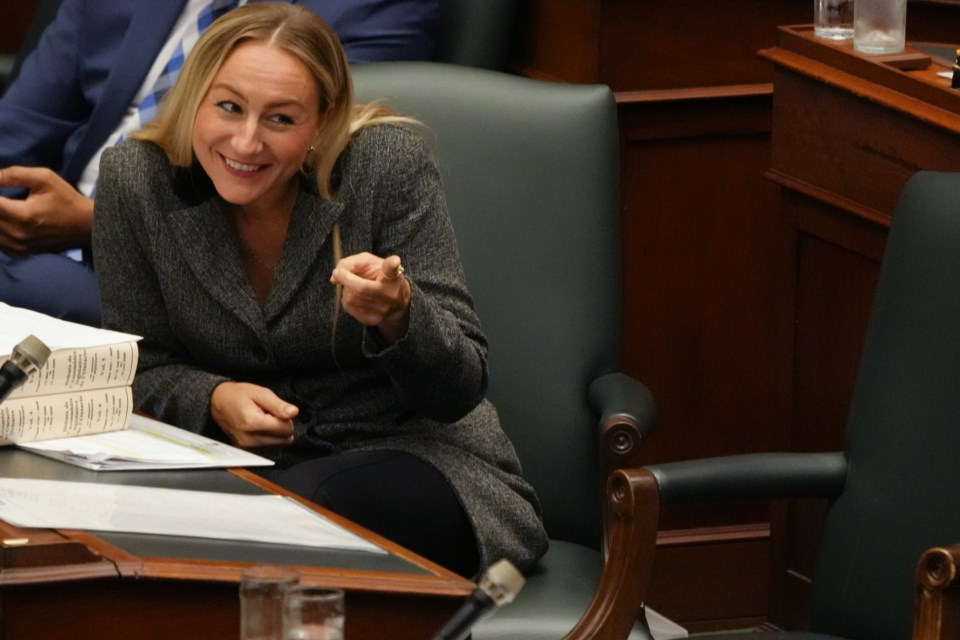Moving the Ontario Science Centre from its current site in Toronto's northeast down to Ontario Place would save taxpayers over $250 million in today's dollars over 50 years, according to an analysis conducted by Infrastructure Ontario.
The findings — that moving is more cost-effective than repairing the 50-year-old building — backs up what the Tories have long said but refused to provide hard numbers to substantiate.
On Wednesday, Michael Lindsay, CEO of the provincial agency Infrastructure Ontario, released the "business case" behind the government's April decision to move the centre as part of the larger Ontario Place redevelopment project.
It had two options: fix everything ailing the current building versus construct a new, smaller site with new exhibits and programming. The analysis didn't look at keeping the centre as-is because it needs a serious revamp "to avoid critical building failure," the document said.
Fixing the current centre would cost $1.3 billion over 50 years.
"This large expense can be attributed to a larger capital requirement, high ongoing operating expenses and (a) more modest increase in visitors and/or revenues," the document said.
The centre would have to be completely shut down during renovations, Lindasy said. The business case estimated construction time at one year but could easily take three-plus years, he added. A longer renovation period would mean higher costs.
Moving, on the other hand, would cost just over $1 billion over 50 years.
The lower cost is "due to a lower capital requirement, reduced operating and maintenance requirements as well as increases in visitors and/or revenues," it said.
The NDP contends the government is fudging some numbers.
It would cost around $709 million to completely repair and maintain the old building for 50 years, versus $659 million to build and maintain a new site at Ontario Place. The other $200 million difference over 50 years is attributed to lower ongoing operating expenses in the Ontario Place location — due in part to lower staffing requirements — and an assumption of higher revenues at the new location.
"This business case is nothing more than a 78-page shell game to justify the Conservatives’ scheme for a private luxury spa at Ontario Place," NDP Leader Marit Stiles said in a statement.
The Ontario Place version of the science centre would be significantly smaller. The current Don Mills site is about 568,000 square feet while the proposed building would be about 200,000 square feet.
A smaller overall building doesn't mean fewer exhibits, however, as the current centre is spread over three buildings and multiple floors, creating a "highly inefficient structure," according to the report, which also contributes to higher operating costs.
Less than a quarter of the current centre — around 100,000 square feet — is dedicated to exhibits. The new building would have an estimated 110,000 square feet of usable exhibit space. Having around 50 per cent of the square footage dedicated to programming would put the new site on par with other science centres across North America.
The current site is "unique" among science centres worldwide because it has about 40,000 square feet of "fabrication" space used to build exhibits for clients. The new site wouldn't have that same feature resulting in around $60 million in lost revenues. The government is contemplating leasing a separate building near Ontario Place should it want to stay in the exhibit-building game.
The new waterfront building would need fewer employees. The current centre has 250 employees. A new building at the same site would need about 409, while a new building at Ontario Place would need about 356.
The report doesn't shed any light on what will happen to the dilapidated Don Mills site when the science centre officially moves.
Despite a 40 per cent drop in attendance from the early 2010s to just before the pandemic, there's still an appetite to have science programming at the existing building. The "new deal" struck between the province and the City of Toronto included language around keeping “public, community-oriented science programming” at the old site.
On Tuesday, Infrastructure Minister Kinga Surma said that's still subject to negotiations.
"I think we need to have more discussions with the City of Toronto on that, that was something that (Toronto Mayor Olivia Chow) asked for," she said.
The report was presented to government in March. Surma first mentioned it in April when she announced the government's intention to move the science centre to Ontario Place but batted away requests to make it public. About a week later, Premier Doug Ford said he was open to sharing it. Several media outlets filed freedom of information requests for it but were denied for months.
Lindsay said the government wanted to ensure no confidential information was included, hence the big delay.




